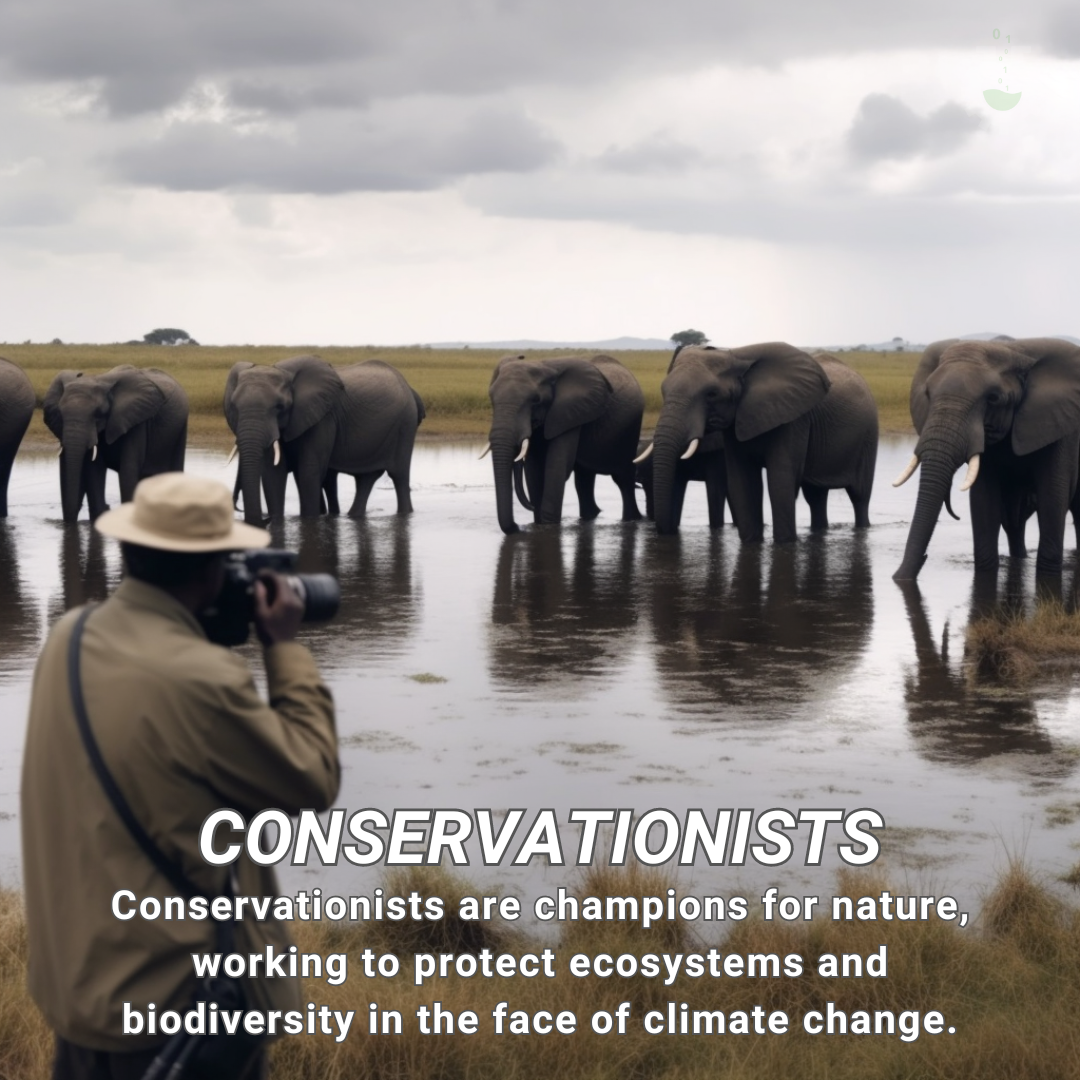January 4, 2024
Climate Change Poster Collection of the Day – Conservationists
Book a Demo
Today’s Climate Change Poster Collection focus on Conservationists are increasingly highlighting the risk of management approaches that allow the loss of individual species while maintaining overall ecosystem functions. They suggest that this approach may not accurately reflect the health of an ecosystem and note the need for ongoing monitoring of key species and diversity measures. This perspective puts a spotlight on the importance of species-level conservation, reinforcing the idea that every species has an intrinsic value and role in an ecosystem.
One common strategy used by conservationists for preserving biodiversity is translocation. This involves moving species to different locations, especially in the face of threats like global climate change. Translocation can help species survive in a changing world by relocating them to areas where they can thrive.
However, the conservation community is not without its internal debates. One ongoing argument is about prioritizing the preservation of entire species and biological communities over individual animals. This issue often leads to ethical arguments with animal rights advocates, who emphasize the importance of every single animal life.
Meanwhile, the role of private conservation areas, which are owned and managed by private investors or syndicates, is gaining recognition. These areas are increasingly seen as vital in the broader effort for biodiversity conservation. They provide alternative sites for conservation that can supplement public lands and reserves.
Plant conservationists face their own unique challenges. One such challenge is dealing with “living dead” species. These are species that survive only as non-reproductive individuals, often in environments dominated by non-native species. This situation calls for innovative approaches to conservation and restoration.
In recent years, conservationists have been implementing a significant shift in their approach to work. They have been expanding their roles and achievements and exploring different environments for conservation. These efforts include introducing new plants and animals, re-introducing old ones, and even collaborating with competitors for mutual benefits.
Conservationists and scientists also agree on the essential role of grazing, fire, and a dry climate in prairie maintenance. However, they warn about the significant reduction in the habitat of many species over the past 50 years. This consensus underscores the importance of using a balanced approach to conservation, one that incorporates both preservation and restoration efforts.
The field of conservation is complex and multifaceted, with many different strategies and approaches being utilized to preserve the planet’s biodiversity. It is a field that is constantly evolving and adapting, much like the ecosystems it seeks to protect.
Discover an inspiring collection of climate change poster.



